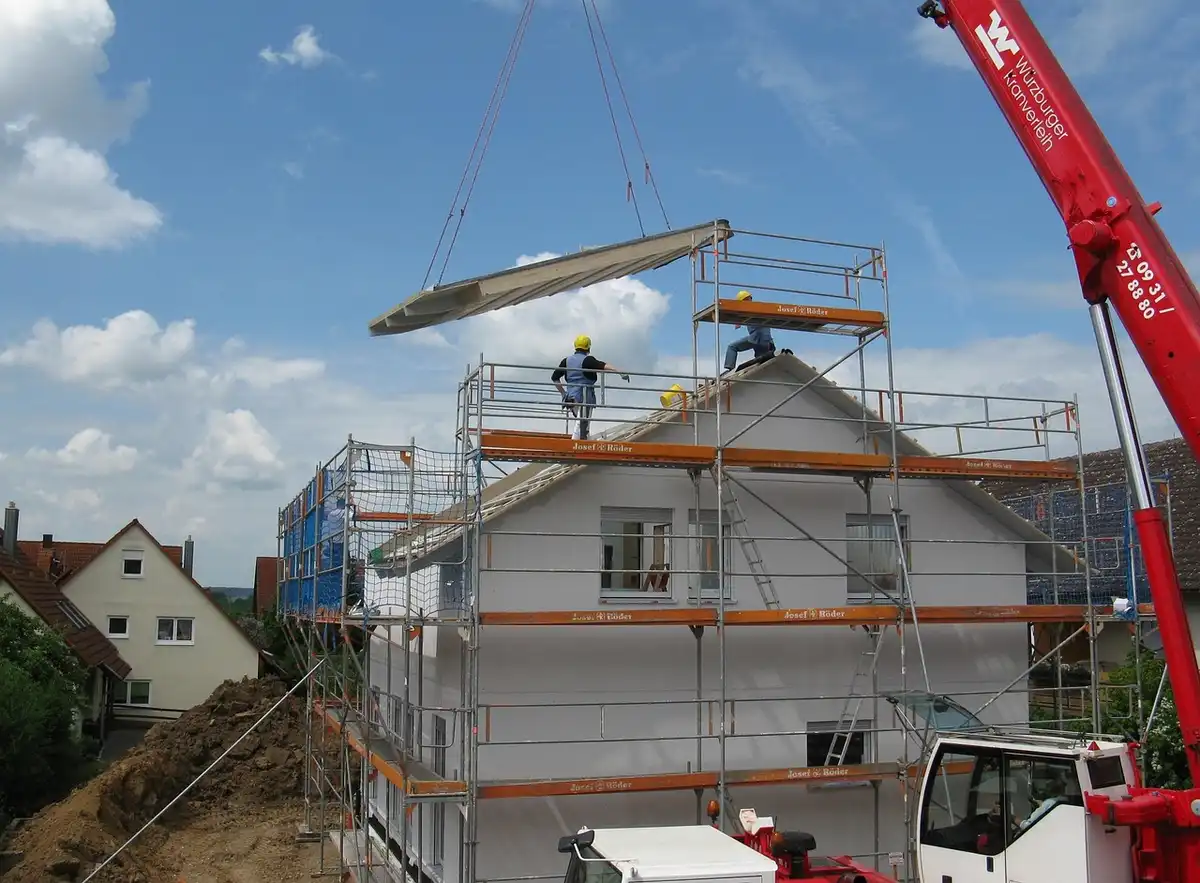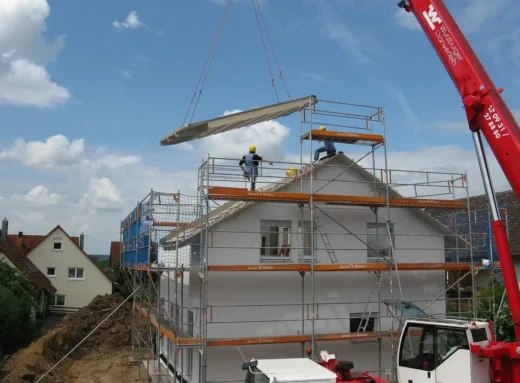Boosting productivity in the architecture industry, Building home maintenance
Boosting Productivity in the Architecture Industry
6 May 2025
Boosting Productivity in the Architecture Industry: Essential Strategies for Success
Architectural practices today face increasing demands for faster project turnaround, greater design complexity, and higher client expectations. Meeting these challenges requires more than exceptional creativity; it demands well-organised workflows, effective communication, and the smart use of technology. By focusing on operational efficiency and continuous improvement, firms can deliver exceptional projects on time and strengthen their competitive position, and here’s how.
Streamlining Project Workflows with Technology
Efficient workflows are crucial for managing the intricate demands of modern architectural projects. Leveraging Building Information Modelling (BIM) platforms, cloud-based management systems, and real-time collaboration apps helps architectural firms centralise project data and enhance coordination. Integrated platforms reduce duplication, ensure faster updates, and simplify client approvals.
Automated scheduling tools, digital whiteboards, and task tracking software allow teams to visualise deadlines and manage dependencies. Streamlining these project stages means that architectural practices can deliver designs more efficiently without compromising on quality. With structured workflows in place, teams can allocate resources more effectively, improving cost management across projects.
Leveraging Collaborative Design Software
Collaborative design software allows multiple team members to work simultaneously on shared models or drawings. Cloud-hosted environments eliminate delays caused by traditional file-sharing methods, providing instant access to the latest revisions and ensuring consistency across project documentation.
Centralising data within these platforms reduces miscommunication and enables quicker decision-making. Whether coordinating between offices or working with remote stakeholders, collaboration tools keep projects on track and minimise costly mistakes. The ability to integrate stakeholder feedback in real time ensures that projects remain aligned with client expectations throughout every development phase.
Embracing Automation for Repetitive Tasks
Architects often encounter repetitive administrative tasks such as updating drawing sets, preparing specifications, or issuing revisions. Automation solutions, including smart templates and macros, free up time for creative design work.
Incorporating AI-driven tools into early-stage design phases can speed up the generation of layout options and site analysis. These tools optimise parameters such as site orientation and zoning requirements, providing architects with more time to focus on refining design intent and meeting client needs. Automation also enhances accuracy in documentation, reducing the risk of costly errors at later stages.
Enhancing Team Communication
Effective communication is fundamental to architectural productivity. Using dedicated communication platforms ensures that all team members stay informed about design changes, client feedback, and shifting deadlines.
Short, regular team meetings and clear digital communication guidelines help reduce misunderstandings. Establishing consistent channels for updates keeps everyone aligned and reduces the time lost clarifying project details. Encouraging open communication also fosters a more collaborative working environment where team members are empowered to contribute their insights.
Improving Knowledge Management and Training
Maintaining a well-organised knowledge base that includes design standards, technical guidelines, and material databases supports faster, more independent decision-making. Teams that can quickly access essential information work more efficiently and confidently.
Investing in regular staff training on emerging technologies, software updates, and new regulatory standards equips teams with the skills needed to adapt to industry changes without productivity dips. Continuous professional development ensures architects remain agile and effective. Regular skills assessments can further identify knowledge gaps, allowing firms to tailor training initiatives more precisely.
Prioritising Secure and Accessible File Management
While design innovation drives architectural practices, organised and secure file management underpins daily operations. A centralised repository with structured folder systems and clear file naming conventions ensures fast retrieval of project documents.
Controlling access rights to sensitive information while maintaining ease of access for authorised users supports secure collaboration. Cloud-based storage with offline access options enables on-site and remote teams to continue working without interruption, safeguarding project momentum.
An essential part of document handling is the ability to easily convert PDFs to Word. Architectural teams frequently need to edit specifications or integrate drawings into reports without starting from scratch. Reliable conversion tools that maintain formatting integrity allow for smoother transitions between document formats, saving time and preserving design accuracy. This small adjustment in workflow can have a significant positive impact on overall productivity.
Adopting Flexible Work Practices
Flexible work models that blend office, remote, and site-based activities can significantly improve productivity. Providing teams with the tools and processes to work effectively from any location minimises downtime and supports collaboration across diverse environments.
Offering flexible working arrangements also contributes to higher staff satisfaction, which positively impacts team engagement and overall project efficiency. Embracing flexibility helps attract and retain top talent, positioning firms for sustainable growth.
Standardising Processes for Greater Efficiency
Standardising key processes across projects reduces variability and eliminates redundant efforts. Templates for contracts, project proposals, drawing standards, and specifications streamline the administrative workload and ensure consistency.
Clear workflows for design submissions, client approvals, and quality checks keep projects moving smoothly through each phase. Standardisation also makes onboarding new staff easier, reducing training times and boosting operational resilience. Firms that document and refine their standard operating procedures can scale operations more effectively.
Integrating Sustainability into Design Practices
Sustainable design strategies can enhance productivity by reducing rework and future-proofing projects. Incorporating energy-efficient principles, durable materials, and flexible-use spaces during early design stages minimises costly revisions later.
Proactively addressing sustainability requirements within initial project scopes helps avoid regulatory setbacks and client dissatisfaction, enabling smoother project execution. Sustainable practices also enhance a firm’s reputation, attracting environmentally conscious clients and expanding market opportunities.
Fostering a Culture of Continuous Improvement
A workplace culture that encourages feedback, reflection, and adaptation supports long-term productivity gains. Regular project reviews to identify process inefficiencies and celebrate successes build a foundation for ongoing improvement.
Encouraging team members to propose innovations, share lessons learned, and participate in refining workflows creates an environment where efficiency naturally evolves over time. Firms that embed continuous improvement principles into their culture are better equipped to adapt to changing industry demands.
Taking Steps to Drive Productivity Gains
Enhancing productivity in the architecture industry demands a comprehensive approach that optimises workflows, fosters collaboration, embraces technology, and invests in people. By systematically improving these areas, architectural practices can deliver higher-quality designs faster, adapt to evolving client expectations, and strengthen their competitive position. Firms ready to implement these strategies will position themselves to meet the demands of an increasingly dynamic and competitive marketplace.
Comments on this guide to Boosting productivity in the architecture industry article are welcome.
Roofing Articles
Roofing Posts
How to make your roofing company a success
Property Design
Contemporary Property Designs – recent architectural selection from e-architect below:
Comments / photos for Boosting productivity in the architecture industry advice guide page welcome.







